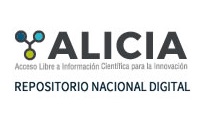ANTIPLAGIO SYSTEM
![]()
Interested in submitting to this journal? We recommend that you review the About the Journal page for the journal's section policies, as well as the Author Guidelines. Authors need to register with the journal prior to submitting or, if already registered, can simply log in and begin the five-step process.
Basic rules for publication of articles
The fundamental purpose of the PLURIVERSIDAD Journal of the Academic Vice-Chancellor of the Universidad Ricardo Palma is to disseminate the advances and results of research on regional, national and global reality in the field of Health Sciences, Technologies, Biological Sciences Social Sciences, Humanities, and related areas. It publishes original articles, essays, short review articles, case studies, interviews, research notes, and reviews.
Submission of articles
Enter your login.If you do not already have an account your will need to register here
PLURIVERSIDAD does not charge the authors for the application, the evaluation process and the subsequent publication of the articles
The articles must be originals and unpublished. The sending of the articles may be done through the website of the journal, http://revistas.urp.edu.pe/index.php/pluriversidad/about/submissions , where it is available an editorial management system. The article may also be sent by email to pluriversidad@urp.edu.pe jmartinez@urp.edu.pe Accompanied by an authorship form dowloaded from https://drive.google.com/file/d/1QayakZMY_fGEhmLH_MK1i8iy77FN6sNk/view The journal will be published with a periodicity of two annual issues.
FORMAT
The articles will be presented in Word format in Spanish, Portuguese or English, with Times New Roman 12 font in a single line spacing. The use of footnotes is not allowed. The minimum extension is 10 sides and the maximum are 25 sides, including graphics and squares in the default letter size given by the Word texts processor.
THE STRUCTURE OF THE ARTICLE:
- MAIN TITLE: It will be in capital and small letters, concise and without abbreviations; the title should not exceed 12 words.
- AUTHORS: They should indicate the name and the surname, detailing the academic degree and the unique institutional affiliation, the full correspondence address that has to include the city, the state and the country and the institutional e-mail address, preferably; this information must be placed under the titles (Spanish); they should appear under the bold title. In the case of several authors, the names will be located in alphabetical order.
- SUMMARY: The summary must be structured in 200 words maximum in a single paragraph, pointed out objectives, methods and technics, results and conclusions.
- KEYWORDS: Maximum 8 words.
- ABSTRACT: English translation of the summary.
- KEYWORDS: Translation of keywords into English.
The order of the articles should be the following: title (Spanish and English), author(s), e-mail, summary, keywords, abstract, introduction, methods and technics, results and discussion, conclusions and references.
Introduction
With approaches to the problem, this section will justify the aim of the investigation. It should be brief and have to mention the importance, background concerning the subject and objectives of the study.
Methods and techniques of investigation
In this section, the applied research methods and techniques will be described, for both, the completion of the work and the analysis of results.
Results and discussion
The relevant results shall be described in a clear, orderly and concise manner. It can be included in the text, drawings, pictures, squares and/or graphics that support the understanding of the writing. The explanations of the results and the comparison of previous works will be presented, as well as the systematizations, inferences, and comments that may arise from the results. It should also be concluded with statements related to the agreed objectives without exceeding the scope of the article.
Conclusions
It will be drafted in a brief, precise and direct manner. The repetition of information previously worked should be avoided; it is important to introduce new information.
Acknowledgments (optional)
Explicit mention of financial support, subsidy, contracts or scholarships that made possible the research.
References
In this chapter are presented only the bibliographical references quoted throughout the article. Those not cited in the text are not allowed.
Curriculum synthesis
This chapter should report in a brief way (no more than eight lines) personal data, institutional affiliation, e-mail address, major academic degrees and achievements, and academic affiliation; likewise, synthetically express the current work and the most relevant contributions made in the research and teaching field.
Quotations and References
It will be drafted following the general APA standards (sixth edition): Textual quotations must be in APA format. Quotations smaller than 40 words are within the paragraph and must be enclosed in quotation marks. Quotes greater than 40 words should be placed apart with left margin indentation and should not be quoted.
Tables and figures (photos, graphs, and maps digitized in JPG or TIFF format), must be of optimal resolutions, numbering, and title in capital letters. Caption. Source of origin.
References:
Book
Surname, A. A. (Year). Title, Place of publication: Editorial.
Kapsoli, W. (1999). Modernidad y pobreza urbana en Lima. Perú: Editorial Universitaria de la Universidad Ricardo Palma.
Book in electronic version / Online Book
Surname, A. A. (Year). Títle. Retrieved from: http://www.xxxxx.xxx
Harris, M. (2004). Antropología cultural. Retrieved from: https://diversidadlocal.files.wordpress.com/2012/09/harris-marvin-antropologia-cultural.pdf
Scientific article with DOI
Surname, A. A. and Surname, B. B. (Year) article title. Journal name, volume (number), pp-pp.
Gómez-Lemos, L. y García, C. (2017). Variaciones adaptativas en la talla de la megafauna bentónica de fondos blandos tropicales en función de parámetros bióticos y abióticos. Revista de Biología Tropical, 65(3), 1002-1021, doi: 10.15517/rbt.v65i3.25579
Newspaper
Surname, A. A. (Date). Article Title. Newspaper name, pp-pp.
Manrique, J. (November 14, 2010). La bestia que se tragó Armero. El Espectador, pp. 16-17
Online newspaper
Surname, A. A. (Date). Article title. Newspaper name. Retrieved From: xxxxxxxx
Temple, I. (7 de abril del 2018). El carisma, la estrategia secreta de la empleabilidad. Gestión. Retrieved from: https://gestion.pe/gestion-tv/carisma-estrategia-secreta-empleabilidad-58404
Thesis and Degree papers
Author, A & Author, A. (Year). Thesis title (Thesis of Undergraduate, master or doctoral ). Name of the institution and place.
Gallardo, E. (2016). Elaboración y validación de una escala para la medición de competencias en personal de mandos medios de empresas privadas. (Mater’s thesis). Universidad Ricardo Palma, Peru.
Reviews
News about editorial novelties related to the interest areas of the journal and bibliographic reviews will be published. They could be dissemination (3 to 5 pages) or critical reviews that explain the theoretical, methodological, epistemological, and analytical conditions about the reviewed book. These will be sent to the editorial area for approval.
It must include the title of the book review, editorial, city and year of the editing. Name and personal record of the author, institution to he belongs and email address. The footnotes (optional) and references at the end of the text, according to APA regulations. (if you use additional references to the book reviewed).
Redundant or duplicate publication
The journal does not accept previously published material and will not consider for its publication manuscripts that are simultaneously delivered to other journals, nor redundant and duplicate publications, this means, articles that substantially overlap another already published, printed or in electronic media.
Ethic in publication
In case of misconduct in the investigation and/or lack of ethics in publication, (plagiarism, manipulations of citation and data forgery/manufacturing, honorary of fictitious authorship, attempted duplicate or redundant publication) during the review process or after publication, PLURIDIVERSIDAD will take the necessary measures based on COPE recommendations (Committee on Publication Ethics) that may include rejecting or retracting the article between others.
The authors of original articles and essays will sign a format of ethical declaration about the originality and unpublished status of their works.
EDITORIAL PROCESS
Initial Evaluation of the editorial committee
The articles will be presented and submitted to a consideration of the Comité Editorial of the PLURIVERSIDAD, which is confirmed by a multidisciplinary team of researches with prestigious academic background.
All articles will be evaluated for similarity detection by generating a report on originality with the application of Turnitin software. All those who exceed 25% plagiarism will be returned to their authors without initiating the review process.
The articles that obtain a favorable report from both, the Editorial Committee and the approval of the anti-plagiarism system according to the international standards, will be reviewed by peers.
Peer review
All articles will be submitted to the review system under the “double-blind” arbitration modality, except for reviews. All others are evaluated by two or more reviewers who are selected according to their recognized academic experience in the field, demonstrated through their publications and academic degrees. In all cases, the participation of the reviewers is anonymous and ad honorem (Latin phrase that means “for the honor of” without any reward)
The reviewer’s rate could be the following: a) the publication is recommended without modifications; b) published with minor observations; c) with major observations; d) it is recommended not to publish the article. According to the observations of the reviewers, the Editorial Committee shall decide to publish the article, reject it or send comments to the author. In the case of non-accepted articles, these are unappealable due to the decision of the Editorial Committee.
Response to observations
The author must submit the corrected article and should respond to the comments sent in a separate document, and have a maximum period of one month to do it. The observations by reviewers and the Editorial Committee must be satisfactorily resolved according to the judgment of the Editorial Committee to publish the article.
Printing test
Only the articles with favorable evaluation and have successfully resolved the observations will pass to the final edition process, where they can make formal modifications of the presentation, but not in the content, which will be presented to the authors for the final approval. If there is no observation, the final version will be accepted.
ANNOUNCEMENT
The call to receive the articles is permanent, magazine number 9 is currently in preparation, the sending of the articles may be done through the website of the journal, http://revistas.urp.edu.pe/index.php/pluriversidad/about/submissions , where it is available an editorial management system. The article may also be sent by email to pluriversidad@urp.edu.pe jmartinez@urp.edu.pe; the average time of the editorial process, which includes the process from the reception of the article to the final decision of the Editorial Committee of the journal PLURIVERSIDAD, varies from one to four months. The journal is published biannually.
ANTIPLAGIO SYSTEM
![]()
License Creative Commons 4.0 (CC BY-NC)

![]()
COMMENTS AND SUGGESTIONS
pluriversidad@urp.edu.pe
Indexed and summarized in:
![]()
![]()
![]()

![]()
Ricardo Palma University:
Av. Benavides 5440 - Santiago de Surco Lima 33 Perú | postal section 1801 | ( 0511 ) 708 0000 | Email: helpdesk@urp.edu.pe
Lima - Perú
www.urp.edu.pe